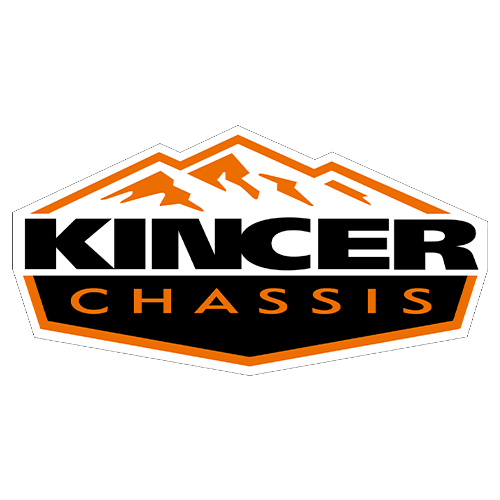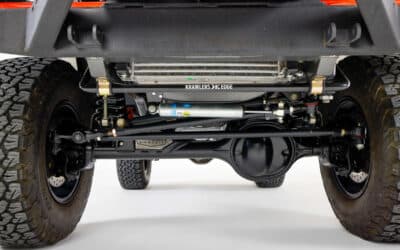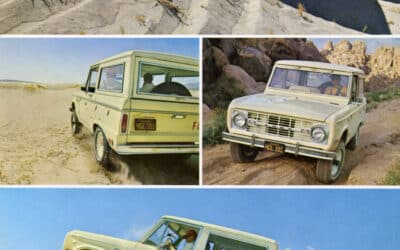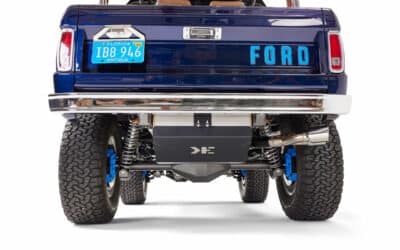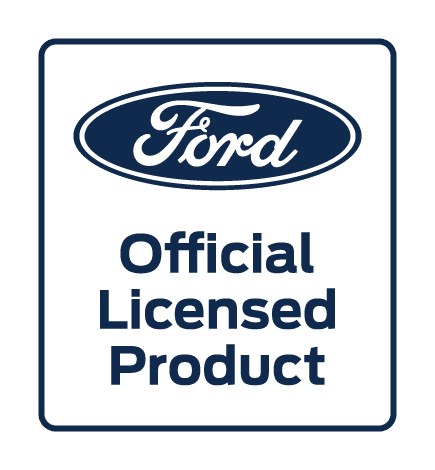When it comes to rugged design and off-road ability, the Highboy Ford stakes a claim like few others in truck history. Known for its high stance and divorced transfer case, this truck is more than a model—it’s a symbol of American automotive culture.
In this article, we’ll explore the key features that distinguish Highboys from other old Ford trucks, look into their historical significance, and understand why these trucks are desired by collectors and enthusiasts alike.
Did you know we make a 2WD to 4WD conversion kit for old Ford Trucks? 1965 to 1979 Ford F-100s, F-150s, F-250s, and F-350s can take advantage of our kit made with all new parts.
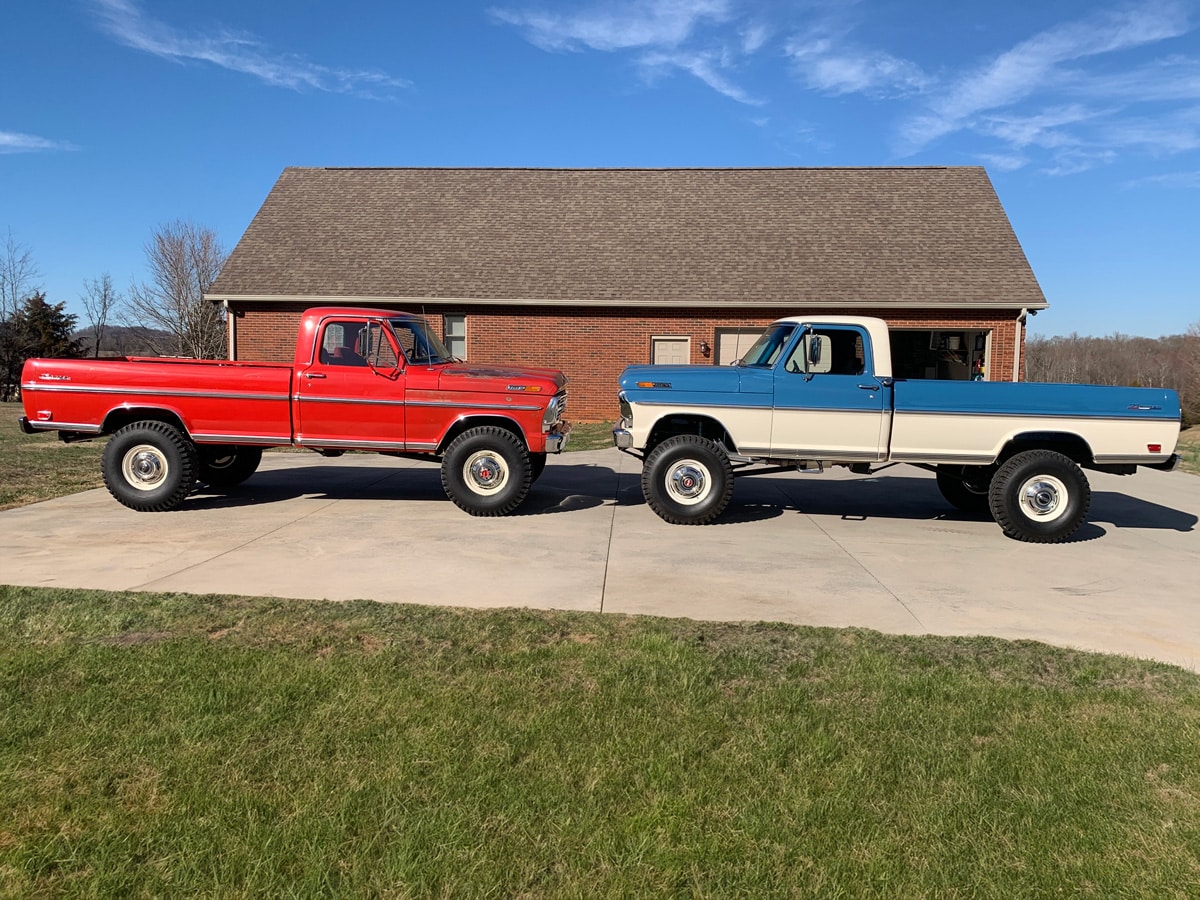
Key Takeaways
- The Ford Highboy is an unofficial enthusiast term for F-250 4×4 trucks produced from 1967-1977.5, characterized by a divorced transfer case that contributed to its higher stance and significant influence on 1970s automotive culture.
- Distinctive features such as Highboy-specific front crossmembers, visible front crossmember below the bumper, Dana axles, and transition to front disc brakes in 1977 contributed to the Highboy’s performance and unique design.
- The Highboy has had a profound impact on truck lovers and collectors, noted for its historical significance, versatility, and strong presence in Ford’s best-selling truck legacy, spawning an active online community and enthusiast following.
Table of Contents
The Legend of the Highboy: Understanding Its Place in Ford History
Contrary to popular belief, the term ‘Highboy’ is not officially recognized by Ford. It’s an enthusiast-coined nickname, originally referring to 1928-1932 Ford roadsters with removed fenders and running boards. However, the term evolved within Ford truck culture, eventually becoming synonymous with four-wheel-drive F-250s built between 1967 and 1977.5.
A divorced transfer case sets the Highboy apart. Unlike the traditional setup where the transfer case is directly bolted to the transmission, the Highboy’s transfer case is separated, contributing to its higher stance, riding 5 to 6-inches higher than similar 2WD trucks. This design feature did more than distinguish the Highboy from other Ford trucks – it also had a significant impact on the automotive industry of the 1970s, providing the foundation for the first advertised monster truck, Bigfoot.
The Birth of the Highboy
The birth of the Highboy was a response to the growing demand for 4×4 trucks. Ford cleverly integrated 4×4 capabilities with balance and stability in the Highboy by using a divorced transfer case. This setup was not directly bolted to the transmission, requiring a taller truck stance and resulting in the Highboy’s distinctive elevated look.
In late 1977, a pivotal transition occurred in the Highboy’s design. Ford eliminated the need for the 4-inch rear lift blocks and narrow frame by switching to married transfer cases. This design change marked the end of the Highboy era and the beginning of the so-called ‘Lowboy’ models.

The Evolution of Ford Truck Suspensions
Over the years, Ford truck suspensions have evolved significantly. The Highboy’s unique suspension system prominently stands out, contributing significantly to its lifted appearance and off-road capabilities. The Highboy models are characterized by front springs, including leaf springs that are 3 inches wide with 5 or 6 leafs, and rear suspension featuring leaf springs that are 2 1/4 inches wide with 9 leafs. These springs are more arched when compared to non-Highboy springs, allowing for larger tires without modification.
Further distinguishing the Highboy’s suspension were the highboy-specific front crossmembers and closed-knuckle Dana 44 front axles. These distinctive attributes significantly elevated the truck’s suspension, adding to the Highboy’s exceptional design and performance.
The switch to married transfer cases in 1977 brought about significant design changes. No longer needing the wide frame and rear lift blocks of earlier models, this switch marked a clear distinction between the original Highboys and the later ‘Lowboy’ models.
At Kincer Chassis, we don’t just make the conversion kit for trucks but we also make custom 4WD chassis for Classic Ford Broncos.
Distinguishing Features of the Ford Highboy
The Ford Highboy transcends being just a truck; it’s a design marvel that has captivated truck admirers. Its distinctive features, such as the visible front crossmember just below the front bumper and narrower frame compared to non-highboy trucks, set it apart from the crowd. These design nuances not only impacted the compatibility with certain parts, like truck beds, but also contributed to its unique frame design.
What makes the Highboy truly stand out is its built-in lift kit. Unlike traditional factory lifts, the Highboy’s stance is achieved through a suspension designed specifically for a divorced transfer case. This design feature adds to its visual appeal and leaves a lasting impression on collectors and truck fans due to its robust nature.
Highboy Axles and Drivetrain Components
The axles and drivetrain components of the Highboy are significant elements of its design and performance. Highboy front axles were 8-lug and could be of Dana 44, Dana 44HD, or Dana 60 varieties, all of which were low pinion designs and featured specific configurations such as open or closed knuckle depending on the model.
Typically, Highboy rear axles were full-float Dana 60s, with a spline count of either 16 or 30. All Highboy axles had a factory gear ratio of 4.10:1. The transfer cases in highboys could include a Dana 24, NP205, or an NP203, offering a range of 4-wheel-drive capabilities. Unlike two wheel drive trucks, the 4-inch lift blocks installed to accommodate the divorced transfer case, along with the narrower 33.5-inch wide frame, influenced the truck’s overall design. This included the drivetrain layout and the necessity for a short driveshaft, in-cab or side-mounted fuel tanks rather than a rear gas tank.
Brakes and Power: The Highboy’s Stopping Force
Braking systems are an integral part of any vehicle, and the Highboy is no exception. From 1967-1975, Highboys were equipped with drum brakes on all four corners. While effective, drum brakes had certain limitations, such as less effective heat dissipation and stopping power.
In early 1977, Highboys transitioned to front disc brakes, offering better stopping power and heat dissipation, with the added introduction of open knuckles that further enhanced performance and safety. Alongside this, optional power brakes were introduced to the Highboy lineup, starting from 1973 to the first half of 1977. This introduction was accompanied by a broad array of booster and pedal configurations to suit the new braking systems, thus enhancing Highboy’s stopping force substantially.

The Highboy’s Role in Ford’s Best-Selling Truck Legacy
The unique design and superior 4×4 capabilities of the Ford Highboy have significantly enhanced the reputation of the Ford F-Series, including the popular Ford Ranger XLT, as sturdy and dependable trucks. This reputation has not only bolstered the sales and popularity of these trucks but has also helped the F-Series become the best-selling truck line in the United States since 1977.
Highboys are renowned for their high ground clearance and sturdy suspension, making them popular with off-road drivers. Their robust terrain capabilities also made them a special appeal for farmers and ranchers due to their off-road capabilities and budget-friendliness. This versatility has created a diverse community of owners and users, further cementing the Highboy’s legacy and contributing to the rich highboy history.
The Highboy’s Influence on The Truck Market
Ford Highboy has profoundly impacted truck fanatics. Its distinctive lifted stance, allowing for fitting larger tires without additional suspension modifications, made it a popular choice among truck lovers. The Highboy’s rugged look and ability to accommodate up to 38-inch tires directly contributed to its appeal and influence on the culture of truck customization, making Ford Highboys a favorite among off-road aficionados.
With its higher stance and robust features, the Highboy has made a notable choice among truck drivers, contributing to a dedicated following. The term ‘Highboy’ itself, while not an official Ford designation, has become synonymous with the distinctive appearance and capability of these trucks, enhancing their appeal within the enthusiast community.
Highboy Variants: From Crew Cab to Camper Special
Both crew cab and regular cab configurations of Ford Highboy trucks catered to varied uses and consumer preferences. Highboy trucks featured wheelbases of 133 inches from 1967 to 1972, which increased to 150 inches in later models.
The crew cab configuration of the Ford F-250 Highboy provided additional space for passengers, making it a practical option for families or work crews. Additionally, starting with the 1974 model year, Ford introduced the Highboy SuperCabs, an extended cab design featuring extra space and side windows, but without additional doors. These different configurations catered to a wider range of consumer needs, further enhancing the Highboy’s appeal.
Restoring and Customizing a Highboy Ford
The restoration of a Highboy Ford is an exhilarating process, presenting a unique mix of hurdles and achievements. Restorers typically strive to preserve the vehicle’s original characteristics while incorporating contemporary advancements for improved functionality. This delicate balance between the past and present is a testament to the Highboy’s timeless appeal and enduring legacy.
One familiar obstacle in Highboy restorations is achieving effective electrical grounding, especially after applying non-conductive materials like powder coat to the frame. However, with the right knowledge and tools, it is indeed feasible to restore a classic Highboy that has sustained significant damage, showcasing the potential for comprehensive restoration projects.
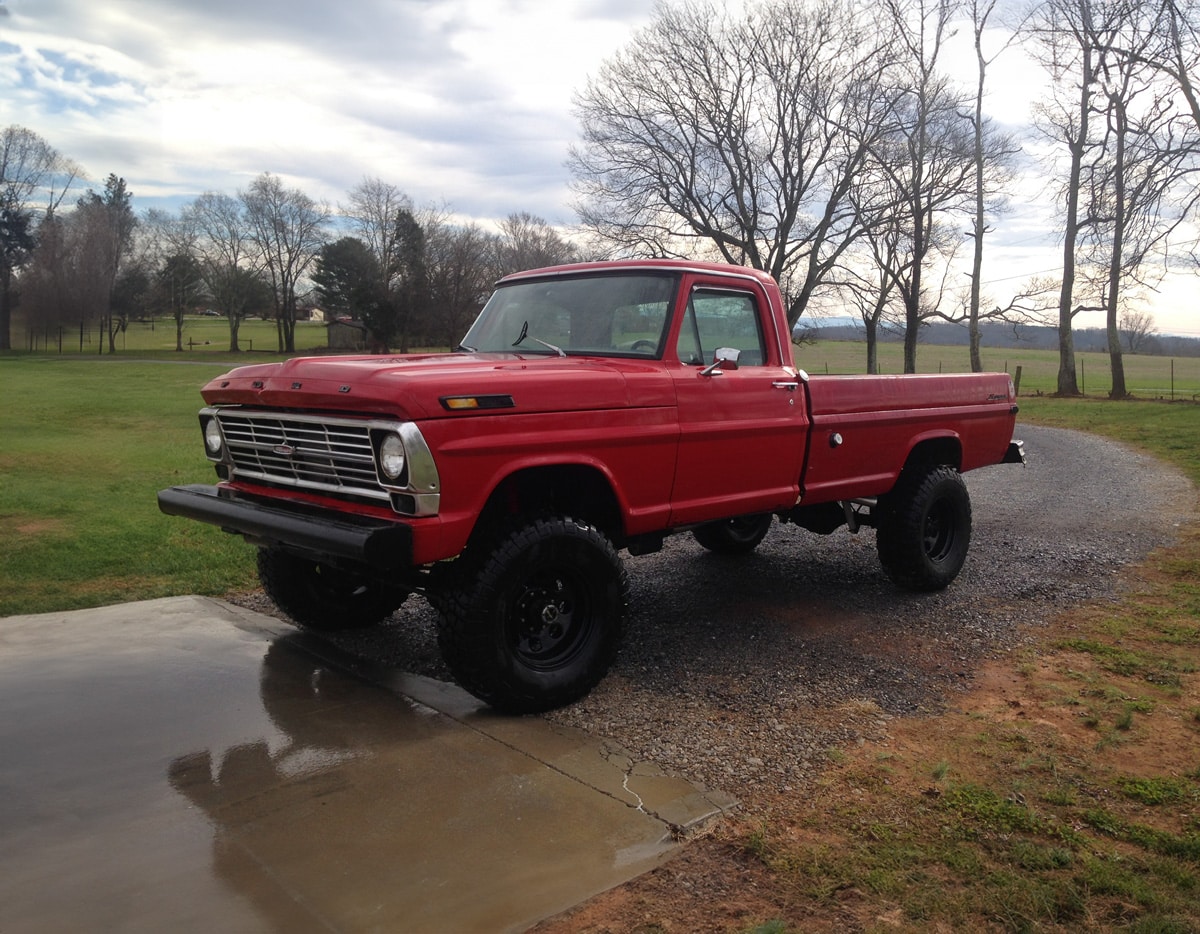
Engine Choices for the Highboy
The engine options for Highboy restorations are as varied. The 5.0 Coyote Engine, known for its exceptional performance and power, has become a popular modern choice for Highboy truck restorations.
5.0 Coyote Engine:
While the modern Coyote engine offers high performance and the ability to run at higher RPMs, it results in less low-end torque compared to the original FE engine. This is a critical consideration during engine swaps. Popular swaps like the robust 385 series engine or the powerful 460 engine provide Highboy restorers with performance upgrades.
7.3 Godzilla Engine:
Introduced by Ford, the 7.3-liter Godzilla engine is a V8 engine that offers significant power and torque. It’s a pushrod engine, which is a nod to traditional design, but with modern engineering for improved efficiency and performance. This engine is known for its robust construction and impressive torque figures, making it an excellent option for those looking to maintain strong low-end power in their Highboy restoration.
5.2 Predator Engine:
The Predator engine, another modern Ford creation, is most famously used in the Mustang Shelby GT500. This supercharged 5.2-liter V8 engine is a high-performance powerhouse. Known for its high RPM capabilities and substantial horsepower, it offers a blend of modern engineering and thrilling performance. This engine might appeal to Highboy restorers who prioritize top-end power and advanced technology.
Each of these engines brings unique characteristics to a Highboy restoration:
- The 7.3 Godzilla is well-suited for those who want a balance of traditional engine characteristics with modern performance, especially in terms of torque and reliability.
- The 5.2 Predator Engine, on the other hand, caters to enthusiasts who are looking for cutting-edge performance and are willing to integrate more complex modern systems into their classic Highboy.
- 5.0 Coyote Engine is known for its exceptional performance and the ability to run at higher RPMs, the Coyote engine is a popular choice for its modern engineering and high output.
When considering these options, it’s important to factor in the implications of each engine swap, such as compatibility with existing systems, required modifications, and overall balance between power, torque, and drivability.
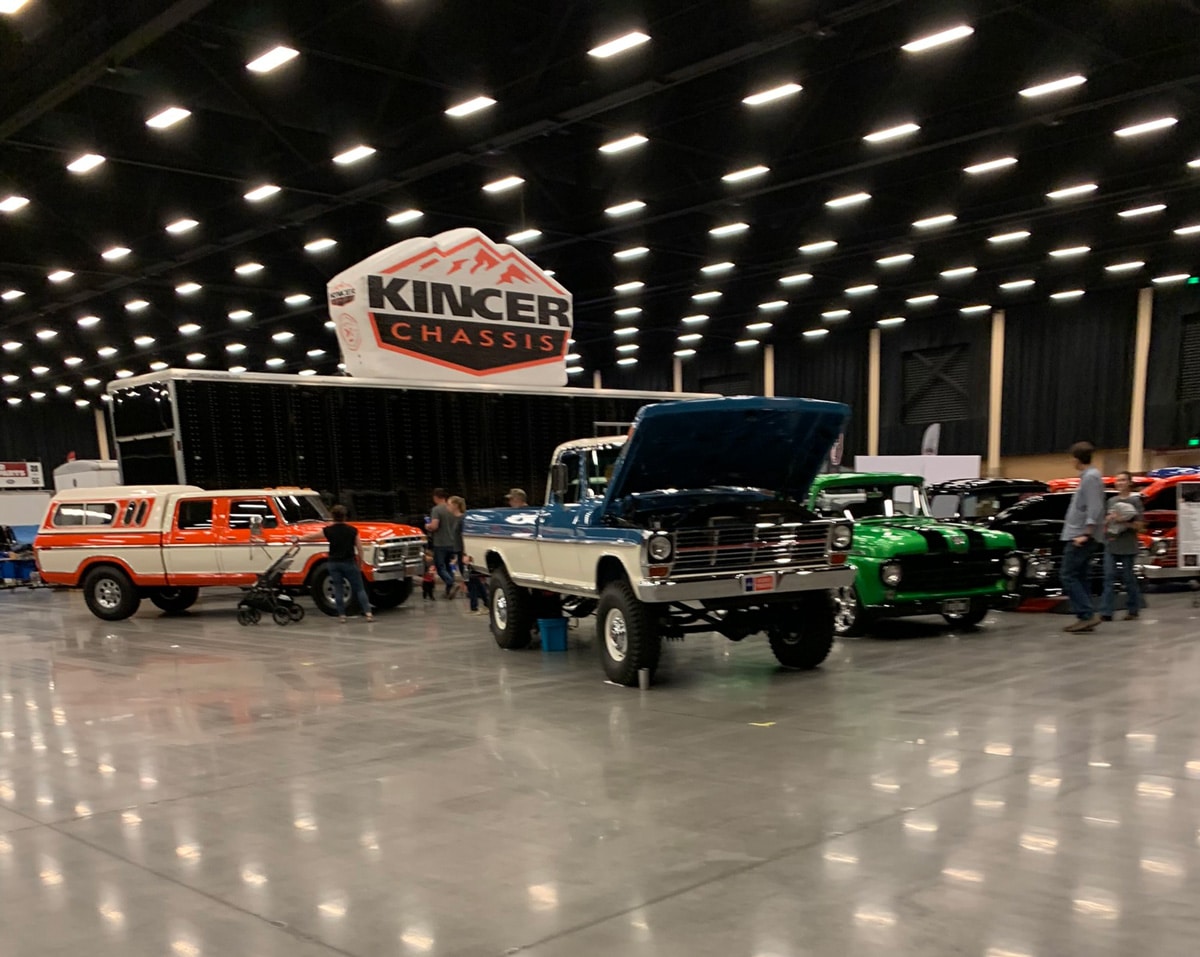
The Highboy in Modern Times: Collectability and Community
In the contemporary era, the Ford Highboy continues to retain its charm and relevance. Its enduring legacy continues to spark discussions and captivate truck collectors. The Highboy’s iconic status and impact on popular culture have reinforced its legacy, making it compelling for collectors seeking trucks with historical significance.
The Ford Highboy community is a vibrant online space where you can share restoration stories, seek advice, and offer support for various projects involving your trucks. The collective wisdom and camaraderie within this community not only serve as valuable resources for Highboy owners but also encapsulate the enduring appeal and timeless charm of these classic trucks.
Why Highboys Captivate Collectors
Collectors find Highboys captivating for a multitude of reasons. Their historical significance, versatility, and unique aesthetic appeal make them enticing pieces of automotive history to own and preserve. Collectors prize Highboy trucks for their versatility, being adept for work, recreational activities, and towing, hence valuing their multifunctional nature.
Moreover, the rise of vintage Broncos has heightened the desirability of the Highboy truck series among collectors. These vibrant and photo-worthy trucks have managed to capture the attention of a broader audience, further enhancing their appeal.
The Highboy Community: A Hub for Passionate Owners
The Highboy community acts as a central point for owners and devotees. From sharing detailed accounts of their restoration efforts to discussing upgrades such as swapping in modern axles and adding power steering, Highboy owners access a wealth of collective knowledge within the community.
This online community also becomes a resource for sourcing parts like moldings and badges that are becoming increasingly difficult to find. Furthermore, some Highboy owners build close relationships with neighbors and locals who appreciate the look of an old Ford truck, fostering a sense of camaraderie and a shared passion for these classic trucks.
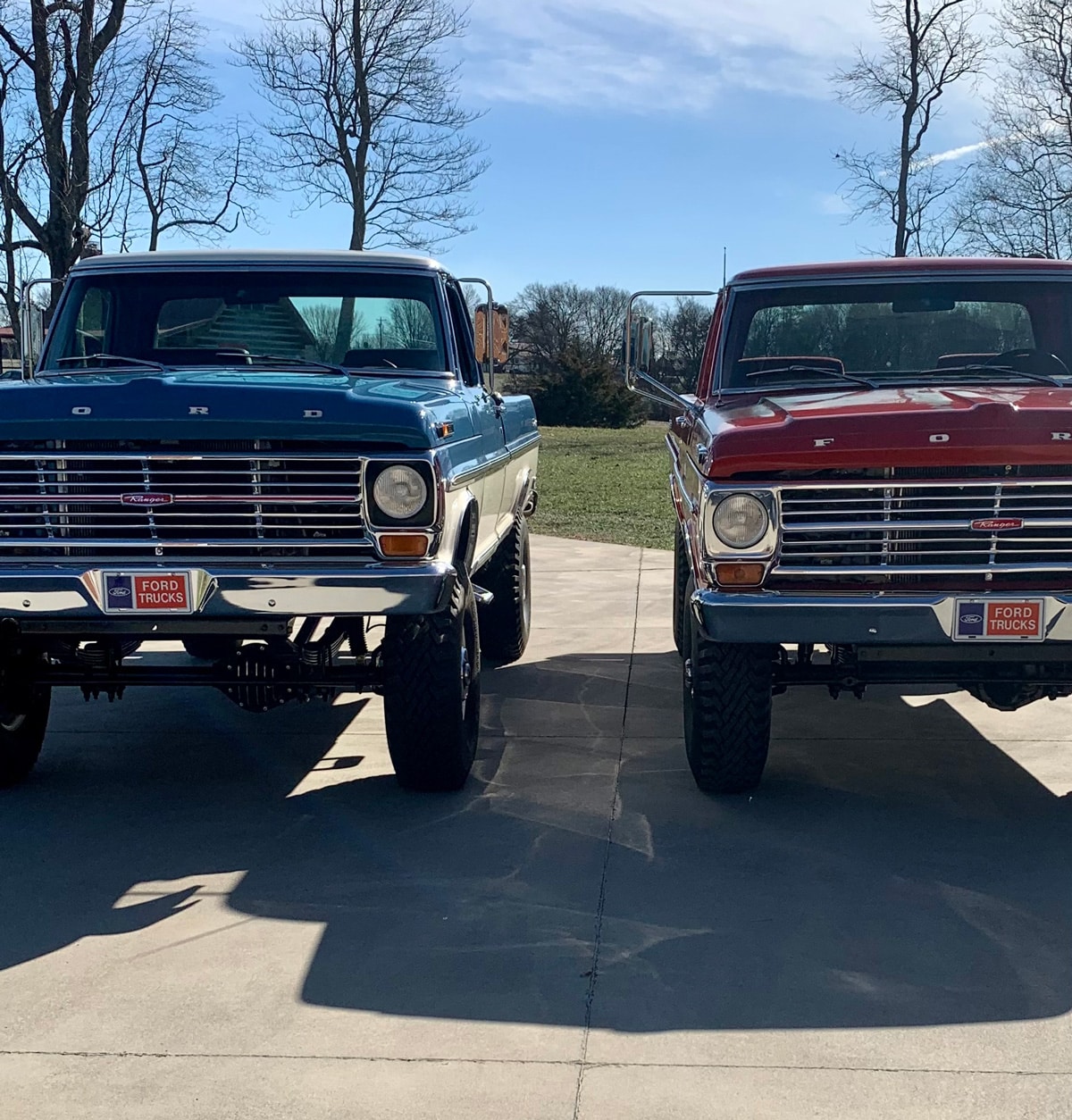
Summary
The Ford Highboy is more than just a truck; it’s an American classic that embodies innovation, resilience, and timeless appeal. From its distinctive stance and robust design to its enduring influence on truck culture and enthusiast communities, the Highboy is a testament to Ford’s commitment to craftsmanship, performance, and versatility.
As we’ve explored throughout this post, the Highboy’s enduring legacy lies not only in its unique design and 4×4 capabilities but also in the vibrant community that surrounds it.
Whether you’re a collector drawn to its historical significance and aesthetic appeal, someone drawn to its off-road prowess, or a restorer drawn to the challenge of preserving its original charm while enhancing its performance, the Ford Highboy continues to captivate and inspire, cementing its place as a true American classic and at Kincer Chassis, we can’t get enough of them.
Frequently Asked Questions
What makes a Ford a highboy?
A Ford is considered a highboy when it’s an F-250 made between 1967-1977.5 with 4WD, requiring a divorced transfer case and resulting in a higher front end for more clearance.
What year is the Ford highboy?
The Ford highboy spans from 1967 to 1977.5, with 4WD and a longer front driveshaft for more clearance and a higher front end, earning it the nickname “Highboy.”
How do you tell if your Ford is a highboy?
You can tell if your Ford is a highboy by checking for a cross member between the front frame horns below the bumper, looking at the front spring pack, and examining the width of the back springs. Additionally, you can identify a highboy by a ram style steering cylinder on the front axle with power steering lines.
Why is the Highboy popular among truck collectors?
The Highboy is popular among truck enthusiasts due to its distinctive lifted stance, off-road capabilities, and ability to accommodate larger tires. These features make it a top choice for off-road and truck collectors.
